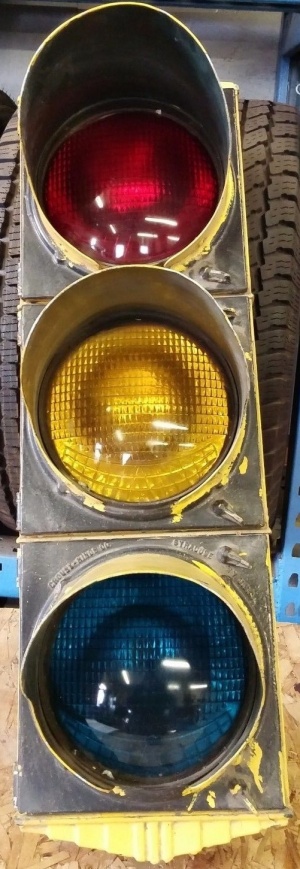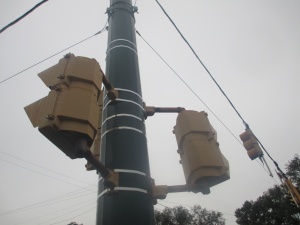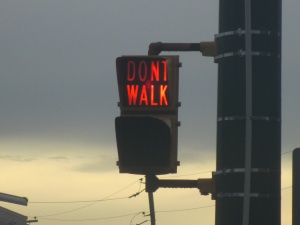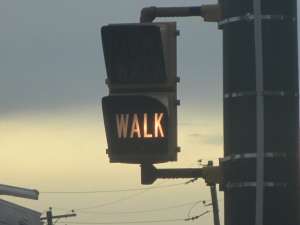Difference between revisions of "Crouse-Hinds"
(→Controllers) |
|||
| (29 intermediate revisions by 3 users not shown) | |||
| Line 1: | Line 1: | ||
| − | == | + | [[File:Work_In_Progress.png]] |
| − | ===Incandescent Signals=== | + | <br> |
| − | ==== | + | <br> |
| − | ==== | + | <br> |
| − | ====[[ | + | <br> |
| − | === | + | |
| − | ==== | + | <font size="3">'''''This page is a work in progress!'''''</font> <br> |
| − | ==== | + | |
| − | ====[ | + | =Crouse-Hinds Company= |
| + | ==History== | ||
| + | ===Current=== | ||
| + | ===Past=== | ||
| + | =Products= | ||
| + | ==Incandescent Signals== | ||
| + | ===Type T=== | ||
| + | The Crouse Hinds type T signal was a solid body signal which used a porthole style of door. The door used four thumb screws to hold it in place and could be removed by loosening the thumb screws and turning the porthole counterclockwise. There are two different styles of thumb screws, the earlier style was thicker whereas the later one was thinner. | ||
| + | There are two different styles of doors, stamped or embossed. The visors are cast aluminum or cast iron, cutaway visors are held on by two screws and the tunnel visors are held on by four screws. | ||
| + | Reflectors are made of glass almost 1/4 of an inch thick and have silver mirroring. | ||
| + | ====Single Face==== | ||
| + | ====Fixed-Face 4-way==== | ||
| + | ===Type D=== | ||
| + | ====Single Face==== | ||
| + | ====Fixed-Face 4-way==== | ||
| + | ===Type DT=== | ||
| + | ====Single Face==== | ||
| + | |||
| + | The Type DT signal is recognizable due to the higher ridges on the latches, and the stamped metal reflector frames. | ||
| + | |||
| + | There are 3 known variants of door on this light at this time: cast visor, detached visor (mounts with 4 screws), and a "raised letter door" that has "CROUSE HINDS CO. SYRACUSE NY USA" embossed around the lens area on the top of the frame. The raised letter door was manufactured between 1955 and 1958. | ||
| + | |||
| + | [[File:Crouse Hinds DT Raised Letter Doors.jpeg|thumbnail]] | ||
| + | |||
| + | ====Fixed-Face 4-way==== | ||
| + | ===Type H [version 1; ᴀᴋᴀ 12" type DT]=== | ||
| + | ===Type M=== | ||
| + | ====M-3 (8")==== | ||
| + | =====Single Face===== | ||
| + | =====Fixed-Face 4-way===== | ||
| + | ====MP (9"x12")==== | ||
| + | =====MP-120 (Vehicle)===== | ||
| + | =====MP-110 (Pedestrian)===== | ||
| + | ===Type H [version 2; ᴀᴋᴀ 12" type M]=== | ||
| + | ====Vehicle==== | ||
| + | ====Pedestrian==== | ||
| − | === | + | ===Type K [12-8-8 combo signal]=== |
| + | ====Generation 1; Type H v1 [12"] / Type DT [8"]==== | ||
| + | ====Generation 2; Type H v1 [12"] / Type M-3 [8"]==== | ||
| + | ====Generation 3; Type H v2 [12"] / Type M-3 [8"]==== | ||
| + | ====Early Canadian Version==== | ||
| − | === | + | ===Type R=== |
| − | '' | + | ====8" Vehicle==== |
| − | + | ====12" Vehicle==== | |
| − | + | ====9" Pedestrian==== | |
| − | + | ====12" Pedestrian==== | |
| + | |||
| + | [[File:Crouse-hinds Type R pedestrian signal backs.jpeg|thumb|The backs of a pair of Crouse-hinds Type R pedestrian signals.]] | ||
| + | [[File:Worded Crouse-hinds Type R pedestrian signal front-Don't Walk.jpeg|thumb|Crouse-hinds Type R pedestrian signal displaying "Don't Walk"]] | ||
| + | [[File:Worded Crouse-hinds Type R pedestrian signal front-Walk.jpeg|thumb|Crouse-hinds Type R pedestrian signal displaying "Walk"]] | ||
| + | |||
| + | ===Various Beacons=== | ||
| + | ====RM-111==== | ||
| + | ====LD-1==== | ||
| + | ====WVW==== | ||
| + | ==Neon Signals, Signs & Inserts== | ||
| + | ===TNA (traffic signal inserts)=== | ||
| + | ====TNA-1==== | ||
| + | ===TNO (signs & pedestrian signals)=== | ||
| + | ====TNO-1==== | ||
| + | ====TNO-2==== | ||
| + | ====TNO-3==== | ||
| + | ===TGO (signs & pedestrian signals)=== | ||
| + | ====TGO-2==== | ||
| + | ====TGO-3==== | ||
| + | ====TGO-4==== | ||
| + | ==Controllers== | ||
| + | ===Internal Controls=== | ||
| + | ====...==== | ||
| + | ===Boxes=== | ||
| + | ====...==== | ||
Latest revision as of 20:16, 18 January 2017
This page is a work in progress!
Contents
- 1 Crouse-Hinds Company
- 2 Products
Crouse-Hinds Company
History
Current
Past
Products
Incandescent Signals
Type T
The Crouse Hinds type T signal was a solid body signal which used a porthole style of door. The door used four thumb screws to hold it in place and could be removed by loosening the thumb screws and turning the porthole counterclockwise. There are two different styles of thumb screws, the earlier style was thicker whereas the later one was thinner. There are two different styles of doors, stamped or embossed. The visors are cast aluminum or cast iron, cutaway visors are held on by two screws and the tunnel visors are held on by four screws. Reflectors are made of glass almost 1/4 of an inch thick and have silver mirroring.
Single Face
Fixed-Face 4-way
Type D
Single Face
Fixed-Face 4-way
Type DT
Single Face
The Type DT signal is recognizable due to the higher ridges on the latches, and the stamped metal reflector frames.
There are 3 known variants of door on this light at this time: cast visor, detached visor (mounts with 4 screws), and a "raised letter door" that has "CROUSE HINDS CO. SYRACUSE NY USA" embossed around the lens area on the top of the frame. The raised letter door was manufactured between 1955 and 1958.




